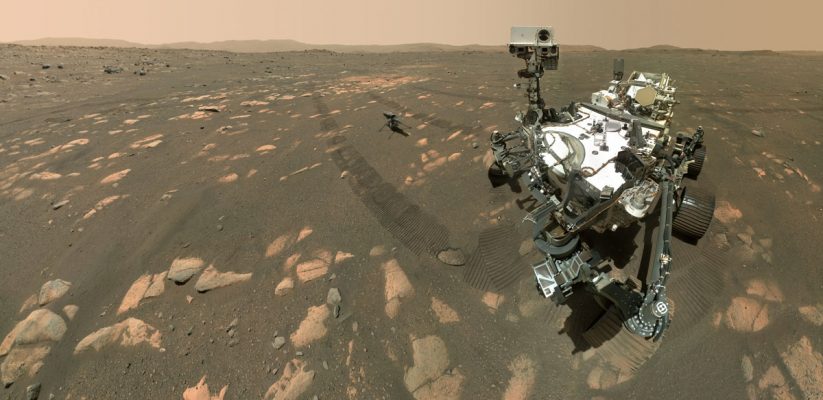The importance of Jezero Crater, the Perseverance Rover’s landing site.
Author: Luna Mia Sigle
On February 18th, 2021, the car-sized rover landed on Mars with one mission: to seek signs of habitable conditions in the past and look for evidence of past (and present) life. Out of all the possible landing sites, why was Jezero crater chosen by NASA, and what will the findings unveil?
Last April we had the pleasure to invite Professor Lewis Dartnell; a research scientist focused on astrobiology and the search for microbial life on Mars, to our Different Conversations Podcast. As he describes, to better understand the relevance of a landing site, it is important to know that Mars rovers can only explore a few kilometres’ range around the initial landing site. Provided that Mars’ surface is 144.8 million km², it would take thousands of missions (and, therefore, years) to explore the whole planet. It is for that reason that the landing site must be very carefully picked in order to obtain successful outcomes.
What is so interesting about Jezero crater, then? Like with the Curiosity rover, Perseverance’s predecessor which has been exploring The Red Planet since 2012, the touch down point is believed to have been once flooded with liquid water, what Professor Lewis Dartnell calls a ‘paleo-lake’. After five years of research and study, and consideration of 60 potential landing locations, NASA chose Jezero crater for the mission ‘Mars 2020’.
Recently, scientists have found that Jezero crater contains residues of clays, a mineral which only forms in the presence of water. Consequently, and considering water is an essential part of the existence of life as we know it on Earth, Jezero crater is likely to have been habitable for microbial life in the ancient past. What makes Perseverance even more interesting and its mission different from others is that it includes a drilling tool that will be used to collect samples of rocks and soils. These samples can be sealed and stored on the surface of Mars and, hopefully, they will be sent back to Earth during future missions for further study.
But Perseverance did not go all the way to Mars alone. The rover carried, strapped on the underside, the drone Ingenuity; a small autonomous helicopter that was designed to fly over Mars’ surface. During our Different Conversations Podcast, Professor Lewis Dartnell discusses why this was an especially difficult job, for the atmosphere on The Red Planet is very low in pressure, resulting in a highly thin air. Even considering that the Martian gravity is lower than Earth’s, the rotors needed to spin incredibly quickly to be able to take off on Mars, making the first powered flight on another planet on April 19th, 2021.
‘Mars 2020’ mission is significant for many reasons, but one of them could be the possibility of colonising other planets. Yes, you read well. The rover will make measurements and technology demonstrations to allow scientists study hazards posed by Martian dust and will test the technology of the experiment MOXIE, a tool that will produce oxygen from the Martian carbon-dioxide atmosphere. To put it simply, MOXIE would work like a tree: inhaling carbon dioxide and exhaling oxygen. This could be used to convert Mars’ atmosphere into breathable air to pressurise habitat modules for a human presence on Mars in the future.
After 257 Earth days on Mars, Perseverance has still a lot of work to do. It is expected that ‘Mars 2020’ will be running for at least two years before NASA launches a retrieving mission. By that time, Perseverance’s journey to Jezero crater will have unveiled incredibly valuable information about life on Mars and possible future expeditions, that is, obviously, after taking some Martian selfies with Ingenuity.
Lewis Dartnell is an author, presenter and Professor of Science Communication at the University of Westminster. He is best known to the public as a popular science writer, especially for The Knowledge: How to Rebuild our World from Scratch. In this episode of the Different Conversations Podcast, Dr Brad Elliott talks to Lewis about the recent moves NASA has made in space exploration. They also discuss how the Perseverance Rover landing on Mars has been an impressive and exciting step towards understanding more about the Red Planet.
